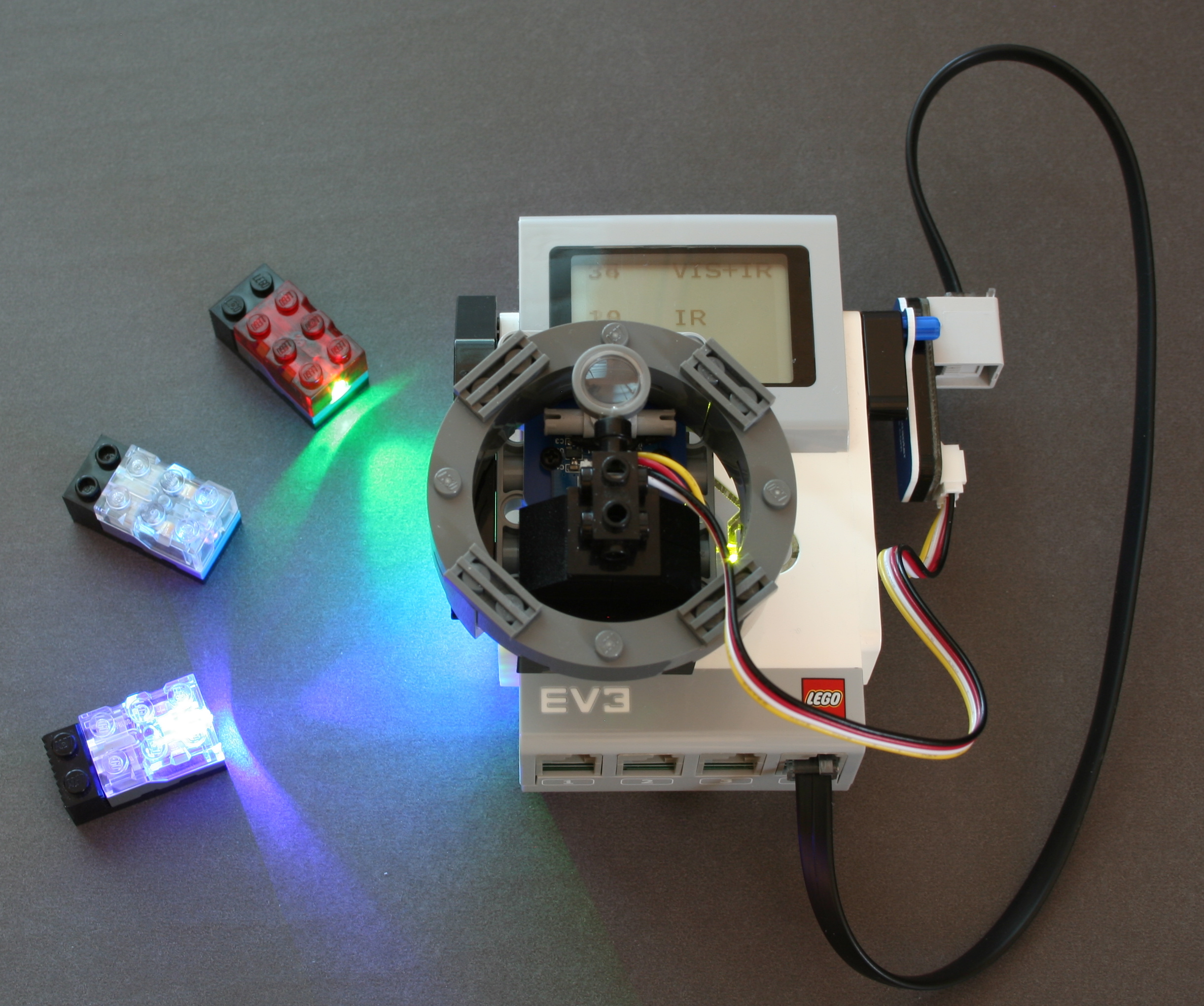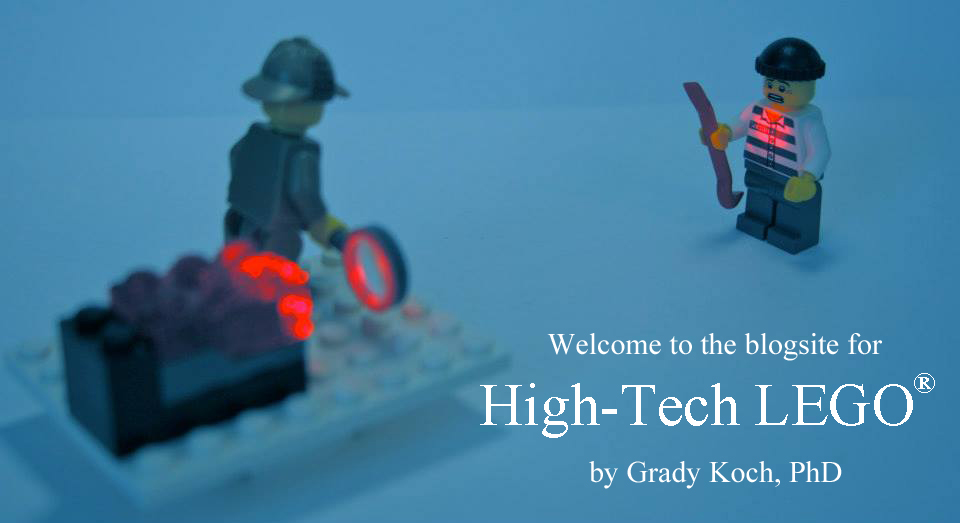LEGO Radiometer

A radiometer is a device for measuring the power within various wavelength bands of
the electromagnetic spectrum. By analyzing the power within these wavelength bands, useful
information can be derived on solar flux, temperature, water vapor, and carbon dioxide.
Weather satellites often carry a radiometer as a payload. Radiometry is also used in a
handheld device for measuring the temperature of objects from several meters away.
The photo above is of radiometer made from LEGO. This is a two channel radiometer, making light
intensity measurements in two wavelength bands: visible through infrared (300-nm to 1100-nm)
and infrared (500-nm to 1100-nm). Measurements in two bands is a neat trick that is usually
accomplished using glass filters that select wavelength bands. But these glass filters are
expensive. The wavelength band selection is made inexpensively possible in the LEGO design
pictured above by using a photodetector sensitive to two different wavelength bands. This
photodetector is in the form of the Grove Digital Light Sensor (seeedstudio.com) connected to
a Grove Sensor Adapter (mindsensors.com). The Grove Sensor Adapter is used several times in
my book “High-Tech LEGO.” The Grove Sensor Adapter is programmed with an EV3 program as shown
below. The communication between the EV3 Intelligent Brick and Grove Digital Light Sensor is
a little complicated, in using a protocol known as I2C. Mindsensors has a good example of
using the I2C communication for the Grove Digital Light Sensor on their web site of
mindsensors.com. I modified the Mindsensors program a bit, as shown below.
Another essential part of a radiometer is a light gathering optic. I used a LEGO magnifying
lens to focus light onto the Digital Light Sensor, similar to the use of this lens in my book
“LEGO Optics.” The round structure around the optics and detector keeps stray light from getting
onto the Grove Digital Light Sensor. This stray light blocking construction is known in the
world of optics design as a “baffle.” The idea behind the baffle is to restrict the light
gathered to be only what is in the field of view of the collection lens.
To show the sensitivity to two wavelength bands, I used LEGO Light Bricks to illuminate the
radiometer at blue, green, and infrared (940-nm) . Illuminating with these different LEDs of
different color will show different responses to the radiometer: the blue LED will show only on
the VIS+IR channel, the green will show on both channels but less in the IR channel, and the infrared
LED will show strongly in both channels. These LEDs are custom modified from stock LEGO Light Bricks,
as described in Chapter 2 of “LEGO Optics.”

